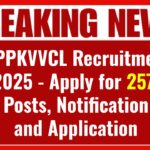H-1B Visa Made Simple: The H-1B visa is a popular pathway for professionals around the world to work in the United States. Recent updates to the program have brought significant changes aimed at improving efficiency, transparency, and fairness. In this comprehensive guide, we will break down the new rules and provide detailed, practical tips to increase your chances of securing an H-1B visa quickly and easily. Whether you are a first-time applicant or renewing your visa, this article has everything you need to know.

H-1B Visa Made Simple
| Key Points | Details |
|---|---|
| Eligibility | Specialty occupations requiring a bachelor’s degree or higher in a specific field. |
| New Rules Effective | January 17, 2025 |
| Premium Processing | Optional expedited service available for faster adjudication. |
| Transition for F-1 Students | Automatic extensions of work authorization to avoid employment gaps. |
| Site Visits | DHS will enhance employer compliance through site inspections. |
| Official Resource | U.S. Citizenship and Immigration Services (USCIS) |
The H-1B visa program remains a critical gateway for global talent to access career opportunities in the United States. By understanding the new rules, preparing a strong application, and staying informed, you can navigate the process with confidence. This guide provides the foundation for your success. Whether you’re a first-time applicant or renewing your visa, following these steps and tips will help you achieve your professional goals.
What Is the H-1B Visa?
The H-1B visa allows U.S. employers to hire foreign workers in specialty occupations requiring theoretical or technical expertise. These roles often include jobs in fields such as IT, engineering, finance, and healthcare. By offering this opportunity, the program serves as a vital bridge for global talent to join the U.S. workforce.
To qualify for an H-1B visa, you typically need:
- A valid job offer from a U.S. employer.
- At least a bachelor’s degree or equivalent in a field directly related to the job.
- Proof that the job qualifies as a specialty occupation.
This program also plays a significant role in addressing workforce shortages in specialized fields, ensuring that the U.S. remains competitive in a global economy.
What Are the Recent Changes to the H-1B Visa Program?
The Department of Homeland Security (DHS) introduced new rules to modernize and streamline the H-1B visa program, effective January 17, 2025. These changes reflect a commitment to improving efficiency, ensuring fairness, and preventing misuse of the system. Below is a detailed look at these updates:
1. Streamlined Approval for Extensions
Under the new rules, previously approved H-1B petitions for the same employer and job role will be granted automatic deference. This means if your application meets all criteria and no violations occur, renewals will be faster and easier. For example, if you’ve been working as a software engineer for a tech company and your role remains unchanged, your renewal process should be seamless.
2. Updated Specialty Occupation Criteria
The updated rules emphasize a clear connection between your degree and the job. For example:
- A degree in computer science is directly related to a software developer position.
- A general business degree may not qualify unless it’s directly tied to job requirements such as market analysis or financial planning.
These changes aim to ensure that applicants possess the precise skills needed for their roles, reducing ambiguity and improving application success rates.
3. Improved Oversight and Compliance
DHS now has expanded authority to conduct random site visits to verify compliance. These inspections ensure:
- Employers adhere to program requirements.
- Foreign workers are performing their approved roles.
Non-compliance can lead to severe penalties, including revocation of the H-1B petition. For employers and employees, maintaining accurate records and adhering to the terms of the visa is more important than ever.
4. Better Transition for F-1 Students
Foreign students on F-1 visas transitioning to H-1B status will benefit from automatic extensions of their F-1 status and work authorization until April 1 of the fiscal year. This eliminates the stress of employment gaps during the transition, enabling a smoother shift to H-1B status.
This is particularly beneficial for students graduating in the spring and beginning their professional roles soon after.
Step-by-Step Guide to Applying for an H-1B Visa
Navigating the H-1B application process can seem daunting. Follow these steps to simplify your journey:
Step 1: Confirm Eligibility
Ensure you meet the basic eligibility criteria:
- Bachelor’s degree or higher in a relevant field.
- A valid job offer from a U.S. employer.
- Proof that your role qualifies as a specialty occupation.
For instance, if you’re applying for a role as a data analyst, ensure your academic background in statistics or data science is explicitly linked to the job description.
Step 2: Secure a Job Offer
Your U.S. employer must agree to sponsor your H-1B visa application. They will file a Labor Condition Application (LCA) with the Department of Labor, certifying that:
- You’ll be paid the prevailing wage for your role.
- Hiring you won’t adversely affect U.S. workers.
A strong job offer with clear terms improves your chances of approval.
Step 3: Prepare and File the Petition
Your employer will file Form I-129, Petition for a Nonimmigrant Worker, with the USCIS. Key documents include:
- Copy of your degree(s) and transcripts.
- Proof of previous work experience.
- Detailed job description linking your qualifications to the role.
Having a well-organized and complete petition minimizes the risk of delays or denials.
Step 4: Participate in the Lottery (if applicable)
H-1B visas are subject to an annual cap of 85,000 (65,000 for regular applicants and 20,000 for advanced degree holders from U.S. institutions). If demand exceeds supply, a lottery system will be used. Employers and applicants must act quickly during this phase to secure a spot.
Step 5: Attend Visa Interview
Once your petition is approved, you’ll schedule a visa interview at a U.S. embassy or consulate. Bring:
- Your original passport.
- Approval notice (Form I-797).
- Supporting documentation such as pay stubs and employment contracts.
Preparation is key to ensuring a smooth interview experience.
Step 6: Begin Employment
Upon visa approval, you can begin working for your employer on the start date specified in the petition. Ensure you maintain compliance with all visa terms to avoid complications.
Practical Tips for a Successful Application
- Tailor Your Application: Clearly demonstrate how your degree and work experience align with the job role.
- File Early: Submit your application as soon as the H-1B filing window opens to avoid delays.
- Use Premium Processing: Consider opting for premium processing to expedite your case for a fee.
- Stay Organized: Keep all documentation, including pay stubs and contracts, easily accessible for compliance checks.
- Monitor Policy Updates: Regularly check the USCIS website for updates and new guidelines.
New Stimulus Payment After Donald Trump Is President In 2025, What To Expect
$227 + $784 + $1,069 Checks For Low Income Beneficiaries: Know Eligibility & Payment Dates
Extra $967 Per Month this month in 2025; These 65-Year-Old Retirees will get it, Check Eligibility
FAQs About H-1B Visa Made Simple
1. What is the H-1B visa cap?
The H-1B program is limited to 85,000 visas annually, with 20,000 reserved for advanced degree holders from U.S. universities.
2. Can I switch employers on an H-1B visa?
Yes, but your new employer must file a new H-1B petition on your behalf. You can start working for the new employer as soon as the petition is filed.
3. What happens if my petition is denied?
If denied, you can:
- Appeal the decision.
- Reapply with stronger documentation.
- Explore alternative visa options.
4. Can my family join me on an H-1B visa?
Yes, your spouse and children under 21 years old can apply for H-4 visas. Spouses may also apply for work authorization under certain conditions.
5. What is premium processing?
Premium processing allows you to expedite your application for an additional fee. USCIS guarantees a response within 15 calendar days.








